In the cultivation of cannabis plants, selecting the appropriate type of planter not only affects the health of your plants but also its yield and productivity. While traditional plastic pots have been commonly used, I prefer fabric planters for cannabis.
Fabric pots, also known as smart pots or grow bags, offer a range of advantages that can enhance the growth and development of cannabis plants.
In this article, I will tell the advantages of utilizing fabric planters in cannabis cultivation, in contrast to conventional plastic pots, while also presenting a brief overview of the essential factors to consider when using fabric planters.
Advantages of Fabric Planters for Cannabis Plants
Let me share with you my experience and the advantages of using fabric planters for cannabis plants.
1. Improved Root Health
One of the major benefits is the improved health of the roots, which ultimately leads to stronger and more productive cannabis plants. The root health is improved due to two phenomena occurring in fabric planters i.e. Air pruning of roots and enhanced oxygen exchange. Let’s look deep into each of them.
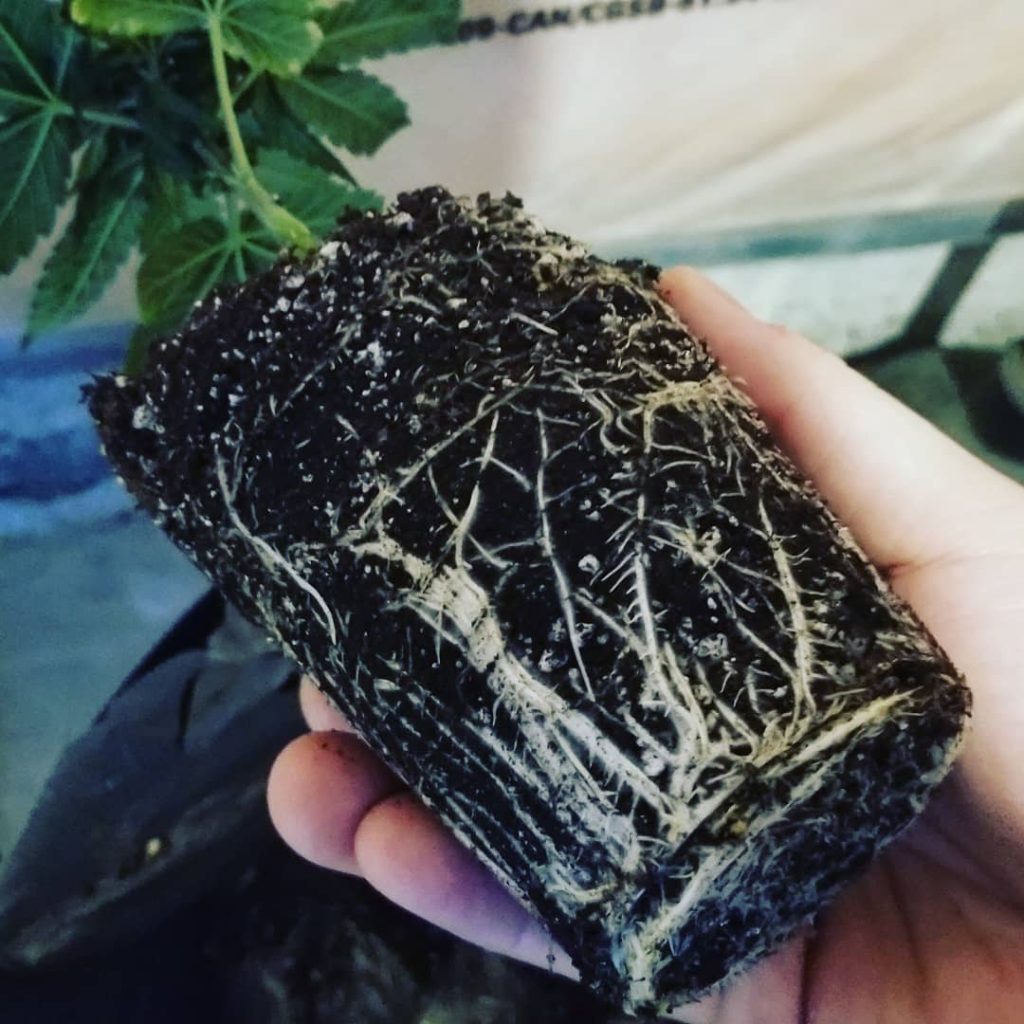
One of the major benefits is the improved health of the roots, which ultimately leads to stronger and more productive cannabis plants. The root health is improved due to two phenomena occurring in fabric planters i.e. Air pruning of roots and enhanced oxygen exchange. Let’s look deep into each of them.
Air Pruning of Roots
Fabric planters promote air pruning of roots, preventing root circling and allowing for the development of a denser root system. Unlike traditional plastic pots, where roots often grow in a circular pattern and become root-bound, fabric pots allow roots to encounter air at the container’s edge. When roots reach the fabric, they are naturally pruned, encouraging the growth of new lateral roots. This air pruning process leads to a more robust and efficient root system, enhancing nutrient absorption and overall plant health.
Enhanced Oxygen Exchange
The breathable fabric construction of smart pots allows for better oxygen exchange within the root zone. With fabric planters, oxygen can easily pass through the container walls, ensuring that roots receive sufficient oxygenation. This improved oxygen exchange stimulates root growth and contributes to stronger, more resilient cannabis plants.
2. Enhanced Drainage and Water Retention
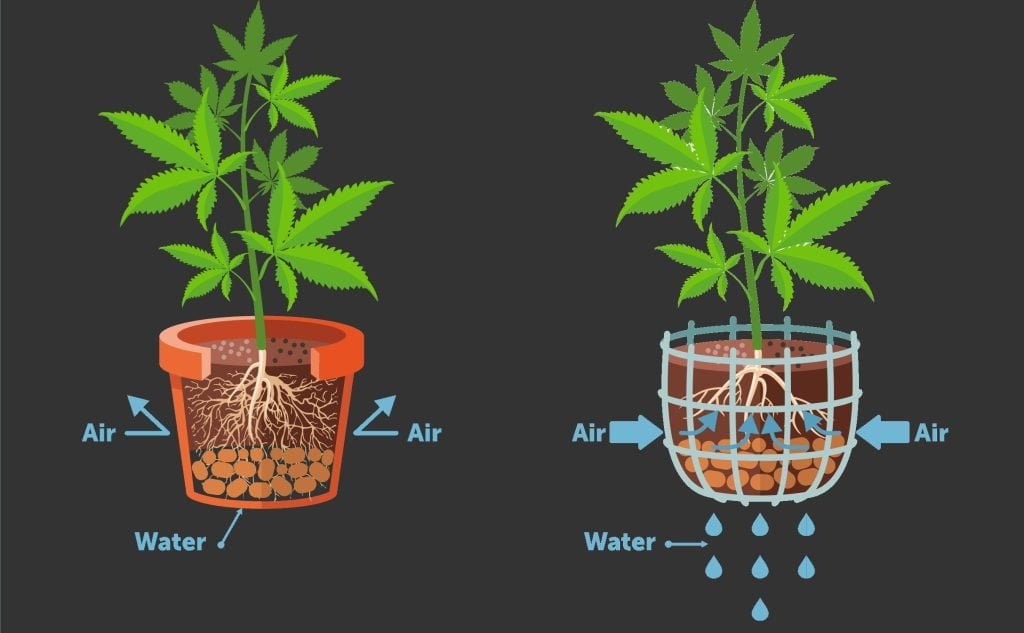
Proper moisture management is vital for the successful cultivation of cannabis plants. Fabric planters offer superior drainage and water retention properties through the combined effect of efficient drainage and water retention. Let’s explore how these two opposite phenomenon works together.
Efficient Drainage
Fabric pots have excellent drainage properties, preventing waterlogged soil and reducing the risk of root rot. Excess water can quickly drain out through the breathable fabric, preventing the accumulation of water in the root zone. This efficient drainage system helps maintain optimal soil moisture levels, preventing overwatering and the associated problems it can cause, such as nutrient imbalances or suffocating the roots.
Water Retention
Despite their excellent drainage, fabric planters also retain moisture better than plastic pots. The porous fabric allows excess water to escape, but it also helps the soil retain moisture. This characteristic is particularly advantageous in regions prone to drought or for growers who prefer to water less frequently. The ability of fabric pots to retain moisture reduces the risk of underwatering and creates a buffer against dry spells, ensuring that the plants have consistent access to water and nutrients.
3. Temperature Regulation
Maintaining the appropriate temperature in the root zone is crucial for the healthy growth of cannabis plants. Fabric planters offer several advantages in temperature regulation:
Heat Dissipation
During hot weather, fabric planters allow excess heat to escape through the breathable fabric. This heat dissipation helps prevent the root zone from becoming excessively hot, which can stress the plants and negatively affect their growth. By allowing heat to dissipate, fabric planters create a more suitable environment for root development, contributing to healthier and more productive cannabis plants.
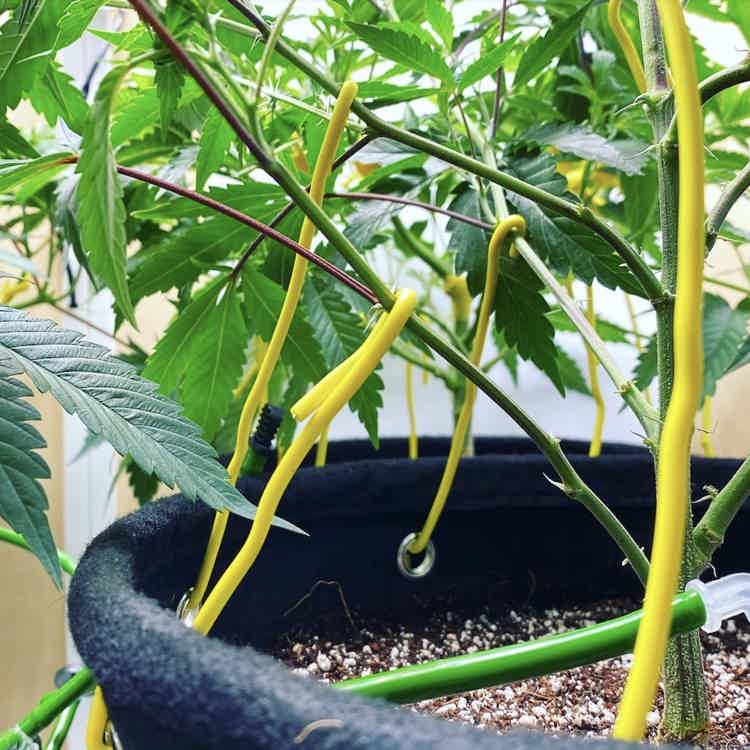
Insulation
In colder climates, fabric pots provide better insulation for the roots compared to plastic pots. The breathable fabric acts as a barrier, protecting the roots from extreme temperatures and frost damage. This insulation helps maintain a more stable root environment, ensuring that cannabis plants can thrive even in cool conditions.
Other Benefits
- Lighter Weight and Portable: Fabric planters are lightweight and portable, making them easy to move and rearrange as needed. This flexibility allows growers to optimize plant placement for optimal light exposure or to adjust the plants’ position based on changing environmental conditions.
- Prevents Salt Buildup: Fabric pots facilitate better nutrient uptake and help prevent salt buildup in the growing medium. The enhanced drainage and aeration properties of fabric planters allow excess salts to be flushed out more effectively, reducing the risk of nutrient imbalances and maintaining a more balanced growing environment.
- Reusable and Eco-Friendly: Fabric planters are reusable and durable, offering a more sustainable option compared to disposable plastic pots. They can be washed and sterilized between uses, reducing waste and the need for continuous pot replacement. Using fabric planters aligns with environmentally conscious growing practices.
Check out best Fabric Planters for your Cannabis plants.
Interesting Facts about fabric planters for cannabis plants
Nutrient Absorption: Fabric planters promote better nutrient absorption by facilitating the development of a more extensive root system. The air pruning process encourages the growth of lateral roots, which increases the surface area available for nutrient uptake. This enhanced nutrient absorption can result in healthier and more vigorous cannabis plants.
Reduced Risk of Mold and Mildew: Fabric planters allow for better airflow around the roots and through the soil, reducing the risk of mold and mildew formation. Adequate airflow helps to prevent moisture buildup and creates a healthier growing environment for cannabis plants.
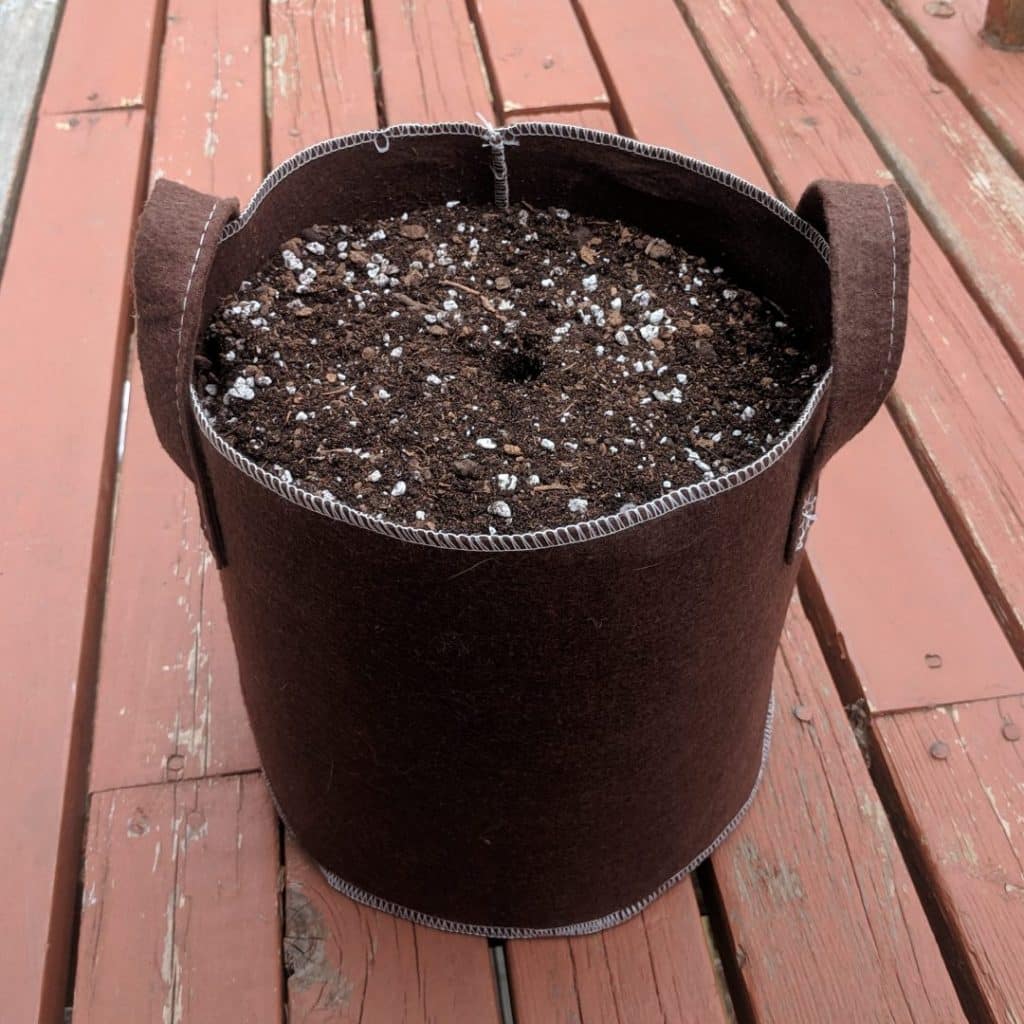
Versatility: Fabric planters come in various sizes and shapes, allowing growers to choose the most suitable option for their specific needs. From small individual fabric pots to larger grow bags, the versatility of fabric planters enables growers to adapt to different cultivation setups and optimize space utilization.
Portability: Fabric planters are lightweight and easy to move, making them convenient for growers who may need to relocate their plants or adjust their growing setups. The flexibility of fabric planters allows for greater maneuverability and adaptability in various growing environments.
Root Zone Temperature Stability: The breathable fabric walls of fabric planters help maintain a more stable root zone temperature. Fluctuations in temperature can stress cannabis plants and affect their growth and development. By providing insulation and preventing extreme temperature changes, fabric planters create a more favorable environment for root health.
Compatibility with Different Growing Mediums: Fabric planters can be used with various growing mediums, like soil and coco coir. Their versatility allows growers to choose the growing medium that suits their preferences and cultivation techniques while still benefiting from the advantages of fabric planters.
Sustainability: Fabric planters are reusable and eco-friendly compared to single-use plastic pots. Their durability and ability to withstand multiple growing cycles contribute to a more sustainable approach to cannabis cultivation. By choosing fabric planters, growers can reduce their environmental impact and promote a greener growing practice.
Prevention of Root Binding: Fabric planters prevent root binding, a common issue with plastic pots. In plastic pots, roots tend to grow in a circular pattern and can become tangled and constricted. This can restrict nutrient uptake and lead to stunted growth. Fabric planters, on the other hand, promote natural root pruning and prevent root circling, allowing for healthier root development and optimal nutrient absorption.
Enhanced Microbial Activity: The breathable nature of fabric planters promotes a healthy microbial ecosystem in the soil. Beneficial microbes play a crucial role in breaking down organic matter and making nutrients more available to cannabis plants. The improved airflow and oxygenation in fabric planters create an environment conducive to microbial activity, resulting in healthier soil and improved plant growth.
Better Water Distribution: Fabric planters promote more even water distribution throughout the growing medium. The porous fabric allows water to permeate evenly, preventing dry spots or water pooling in certain areas. This consistent water distribution helps prevent overwatering or underwatering issues and ensures that all parts of the root system receive adequate moisture.
Root System Insulation: Fabric planters provide insulation to the root system, protecting it from extreme temperatures. In hot climates, the fabric helps to keep the roots cooler by dissipating excess heat. In colder climates, the fabric acts as a barrier, insulating the roots and protecting them from freezing temperatures. This insulation effect contributes to the overall health and vitality of the cannabis plants.
Training Flexibility: Fabric planters offer more flexibility when it comes to training techniques such as topping, pruning, or using support structures like trellises. The fabric material is more pliable than plastic, making it easier to manipulate the plants and adjust their growth patterns. This flexibility allows growers to optimize their training methods and achieve better canopy management.
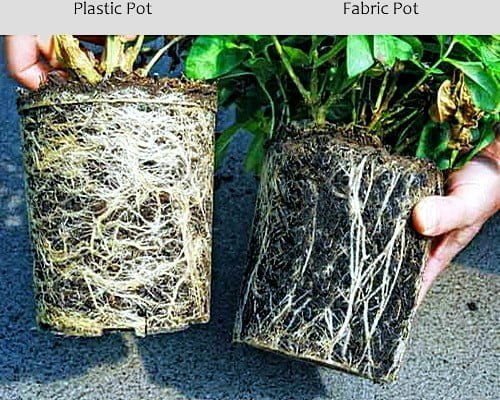
Fabric Planters vs. Plastic Pots: A Comparison
Fabric Planters
- Aeration and Drainage: Fabric planters offer excellent aeration and drainage properties, ensuring that the root zone remains well-ventilated and free from excessive moisture. The breathable fabric allows for efficient oxygen exchange and prevents waterlogging, reducing the risk of root rot.
- Root Health: Fabric planters promote healthier root systems through air pruning. The air pruning mechanism prevents root circling and encourages the growth of lateral roots, resulting in improved nutrient absorption and overall plant vigor.
- Temperature Regulation: The breathable fabric construction of fabric planters allows for better temperature regulation. Excess heat can escape during hot weather, preventing the root zone from overheating. In colder climates, the fabric provides insulation, protecting roots from frost damage.
- Reusability and Eco-Friendliness: Fabric pots are reusable and durable, making them a sustainable choice for cannabis growers. They contribute to reducing waste compared to single-use plastic pots and promote a more environmentally friendly approach to cultivation.
Plastic Pots
- Moisture Retention: Plastic pots tend to retain more moisture, which can lead to waterlogged soil and root rot if not managed properly. Insufficient drainage can result in the accumulation of surplus water in the root zone, leading to imbalances in nutrients and other associated problems.
- Limited Aeration: Plastic pots do not offer the same level of aeration as fabric planters. The lack of airflow within the container can lead to root circling, poor nutrient absorption, and stunted growth.
- Temperature Concerns: Plastic pots can accumulate heat, potentially raising the temperature in the root zone during hot weather. This heat buildup can stress the plants and negatively affect their development.
- Durability and Longevity: Plastic pots may require replacement over time due to wear and tear. They are generally less durable compared to fabric planters.
Bud Trainers
If you want to grow your plants in a fabric pot with little to no supervision, check our Bud Trainer pots.
BudTrainer products were designed to make Low Stress Training easier for growers. When cannabis plants are left to grow on their own, they have a tendency to grow into a Christmas tree type shape. What then happens is the top buds and branches get the most sunlight and block light from hitting lower branches. The top buds become impressively large while the lower buds are left underdeveloped.
By training our plants to grow outwards we can make sure each bud is reaching its full potential. It also helps plants from growing too tall and potentially being seen by nosy neighbors.
Conclusion
Fabric planters offer numerous advantages for cannabis cultivation compared to traditional plastic pots. The improved root health, enhanced drainage and water retention, temperature regulation, and superior air pruning capabilities make fabric planters an excellent choice for cannabis growers.
Whether you’re a novice or an experienced cannabis cultivator, considering fabric planters for your cannabis plants can be a wise investment in maximizing your crop’s potential. Embracing the benefits of fabric planters can lead to healthier, more robust plants and a more successful cultivation journey.
If you want to learn even more about growing good cannabis, we offer a free 40+ page guide full of images.
Now available on Amazon.
Sign up for our newsletter and download the digital copy today!
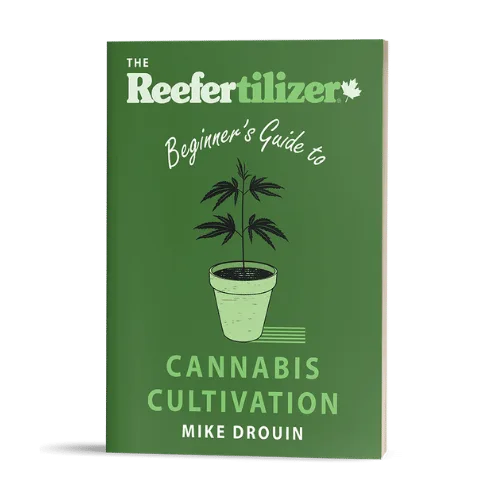
This guide will answer many questions about growing cannabis, like the following...
Selecting Seeds
Identify and Correct Problems
Maximize Yield
Much More...
Get a Chance to INSTANTLY WIN a Reefertilizer Nutrient Kit When You Sign Up.
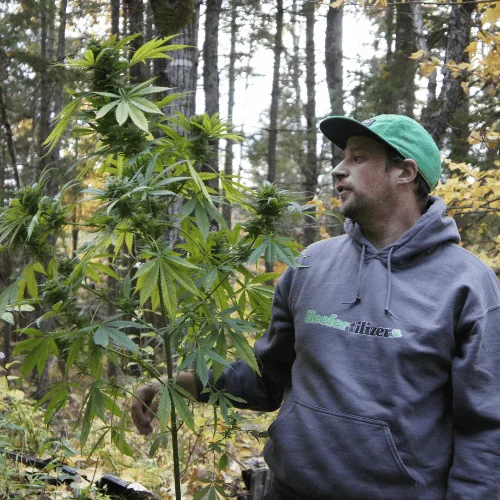
Mike Drouin is the co-founder of Reefertilizer. He’s an experienced craft cannabis grower and a writer of many articles regarding the process. Mike lives on Vancouver Island and enjoys cycling and camping and will sometimes combine the two.
